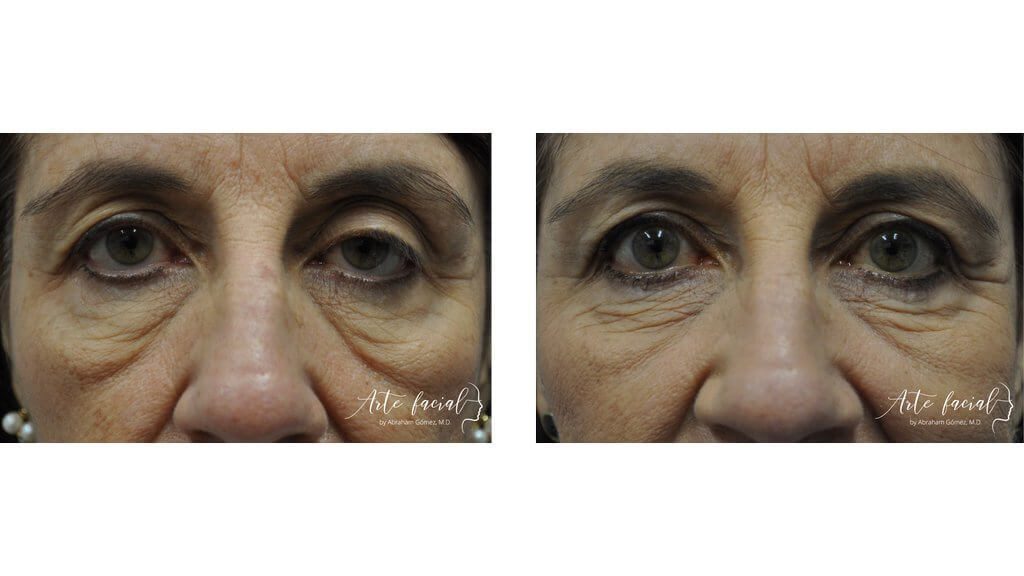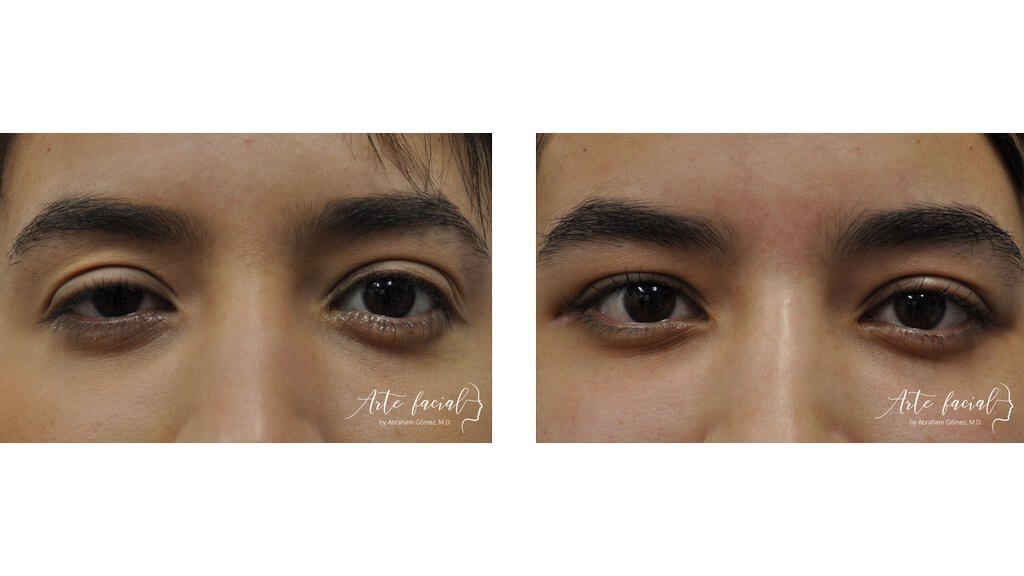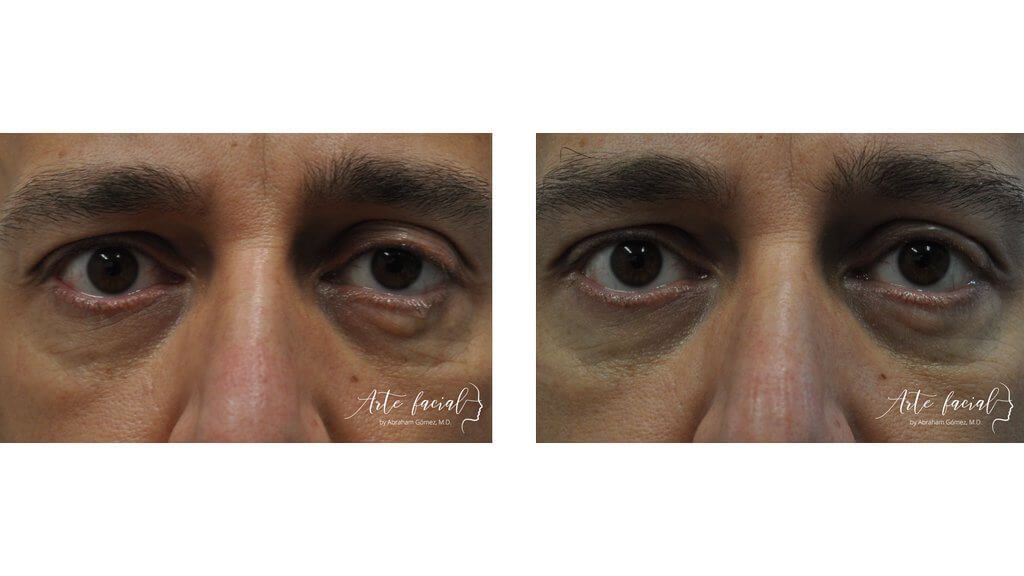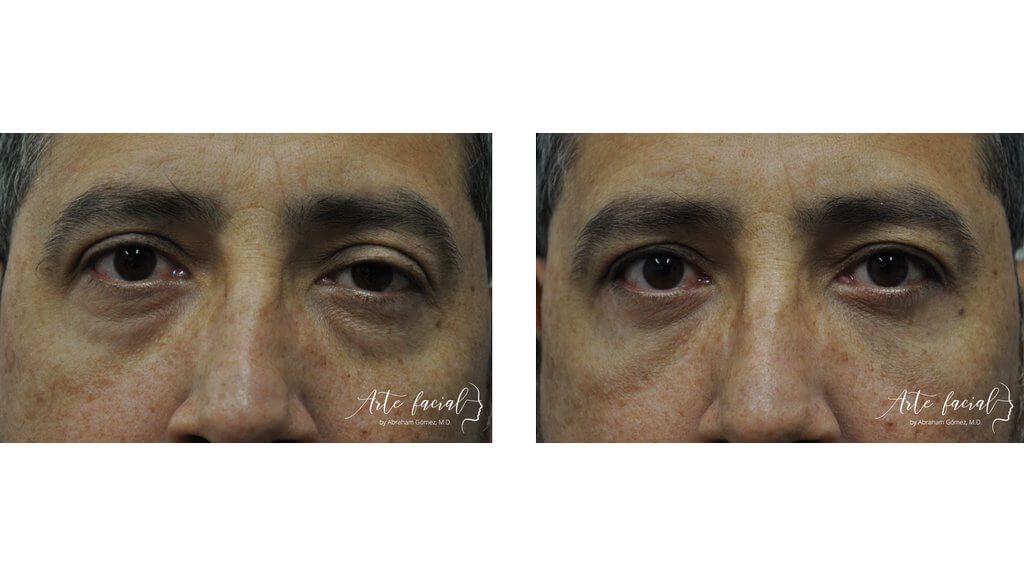Before
After





Droopy eyelid surgery (5)
Droopy eyelid surgery (4)
Droopy eyelid surgery (3)
Antes y después (Ptosis)
Droopy eyelid surgery (1)





A droopy eyelid may be an acquired condition or it may present since childhood. In congenital cases, the person was born with a weak levator muscle which is the muscle responsible for raising the upper eyelid. Other people have a droopy eyelid because of trauma or previous eye surgeries. However, the most common cause is stretching of the levator muscle; this is known as aponeurotic ptosis in medical terms. Simply stated, the muscle has stretched and lost its strength, like a garage door with a loose chain.
Patients with droopy eyelids look tired or sleepy. They may experience recurrent headaches or may have difficulty reading and carrying out their jobs. Ptosis is one of the most common conditions treated by eyelid specialists.
This is an outpatient procedure, so you will be able to go home the same day of the operation. During the surgery, you will be under the care of an anesthesiologist, who will use a type of anesthesia that does not require intubation and offers more comfort and a quicker recovery, with a small risk of nausea. You will experience little pain after the surgery, although some degree of discomfort is normal. Most patients can return to work within a week.
Restoring the function of the levator muscle should increase your visual field by removing the obstruction caused by the droopy eyelids. Most patients notice a broader field of vision, less eye fatigue, and a rested appearance.
Before
After










+506 7032-5570
Abraham Gómez, MD
Hospital Clínica Bíblica, Omega Building, 2nd floor
Loras Medical, Torre Las Loras, main floor
ARTE FACIAL
ARTE FACIAL
Visit us at our new office! 25% off on your consultation at Loras Medical. Book here (Valid Until December 15, 2023.)
Please fill out the form below to schedule a virtual consultation with Dr. Gomez.